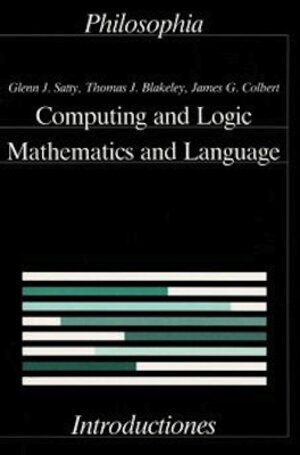
×
![Buchcover ISBN 9783884050712]()
This text is designed to help students overcome their hesitancy in the face of computing by leading them through simple mathematics, including set-theory and two forms of logic (propositional logic and traditional syllogistics), to basic questions of natural-language parsing.
After introduction of basic notions on propositions and the nature of logic, the earlier parts center on sets and operations on sets. A discussion on quantifiers forms the bridge to considerations of mathematical logic, whence the discussion moves to Aristotelian syllogistics with its formal proofs and specific form of demonstration.
In the last part of the book, the student is encouraged to follow the logical structure of a simple syntactic parser. This is used, then, as a foundation for presentation of some elements of a semantic parser, which approaches the analysis of sentences from the viewpoint of traditional category theory.
Throughout the book, the more difficult questions of mathematics and philosophy of logic are illustrated with the use of simple BASIC routines, plus some illustrations in PROLOG, a fifth-generation computing language.
This text is recommended for mathematics classes, where the use of the computer will support traditional methods; and for philosophy courses, where digitalized logic can help illustrate the evolution of formal methods; for logic courses that can benefit from ample exercises in several computer languages; and for linguistic sectors that involve parsing and questions of natural language representation in formal languages.
Suitable as textbook for courses in Logic (undergraduate level), Introduction to Computer Programming, Symbolic Logic.
Of interest to:
After introduction of basic notions on propositions and the nature of logic, the earlier parts center on sets and operations on sets. A discussion on quantifiers forms the bridge to considerations of mathematical logic, whence the discussion moves to Aristotelian syllogistics with its formal proofs and specific form of demonstration.
In the last part of the book, the student is encouraged to follow the logical structure of a simple syntactic parser. This is used, then, as a foundation for presentation of some elements of a semantic parser, which approaches the analysis of sentences from the viewpoint of traditional category theory.
Throughout the book, the more difficult questions of mathematics and philosophy of logic are illustrated with the use of simple BASIC routines, plus some illustrations in PROLOG, a fifth-generation computing language.
This text is recommended for mathematics classes, where the use of the computer will support traditional methods; and for philosophy courses, where digitalized logic can help illustrate the evolution of formal methods; for logic courses that can benefit from ample exercises in several computer languages; and for linguistic sectors that involve parsing and questions of natural language representation in formal languages.
Suitable as textbook for courses in Logic (undergraduate level), Introduction to Computer Programming, Symbolic Logic.
Of interest to:


